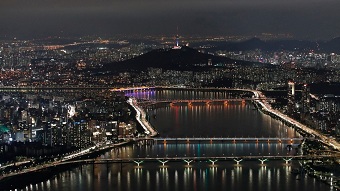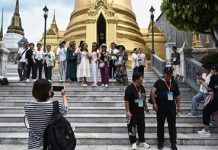The Seoul Metropolitan Government has announced a new pilot project to address suicides on bridges spanning the Han River, the main waterway bisecting the city, by rolling out an AI-based surveillance system paired with a new CCTV camera control hub that uses deep learning to identify the “patterns” of people in crisis.
Currently, Seoul has CCTV operators working on three rotating shifts that cover 24 hours a day, seven days a week, at four different control centres in the Yeouido, Banpo, Ttukseom and Gwangnaru neighbourhoods on the river. In a statement, the Seoul Metropolitan Government said it has been operating a CCTV surveillance and response system since 2012 on the Mapo and Seogang Bridges spanning the Han River, as they have the highest number of suicide attempts, monitoring the bridges 24 hours a day and “proactively responding to suicide attempts.”
From 2015 to 2018, the Seoul Metropolitan Government invested approximately CAD$10.3 million to expand their system to eight more bridges, installing 20 CCTV systems comprising three types – fixed, rotating and thermographic cameras – on all 10 bridges. The system allows rescuers to monitor the bridge through 572 CCTVs in real-time and arrive at the scene in four minutes, the statement said.
In a press release, the government explained that the new partnership between the Seoul Institute of Technology and the Seoul Fire & Disaster Headquarters (SFDH) is aimed at improving the current suicide detection system – and has been analyzing data from SFDH since April 2020. The data includes dispatch reports, CCTV footage, data from bridge sensors, information from people who had previously attempted suicide, report history, phone calls and text messages. The AI system would then send the CCTV footage that it flagged to a monitoring agent at the new integrated control centre to dispatch the relevant authorities.
“This system allows rapid responses to suicide attempts—both before or after an incident—and minimizes surveillance loopholes. Not only that, but it can also dramatically reduce warning errors thanks to AI’s ability to reflect environmental factors, including illumination levels and weather, as well as characteristics of Han River bridges such as wobbling caused by winds and traffic. As data accumulates, the accuracy of the system will increase further,” the release states. According to the Seoul Metropolitan Government, every year approximately 486 people attempt suicide on bridges spanning the Han River and authorities are able to save 96.63 per cent.








